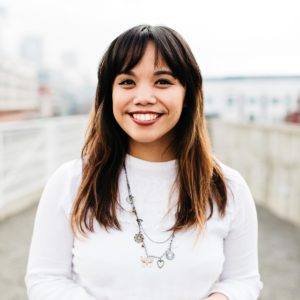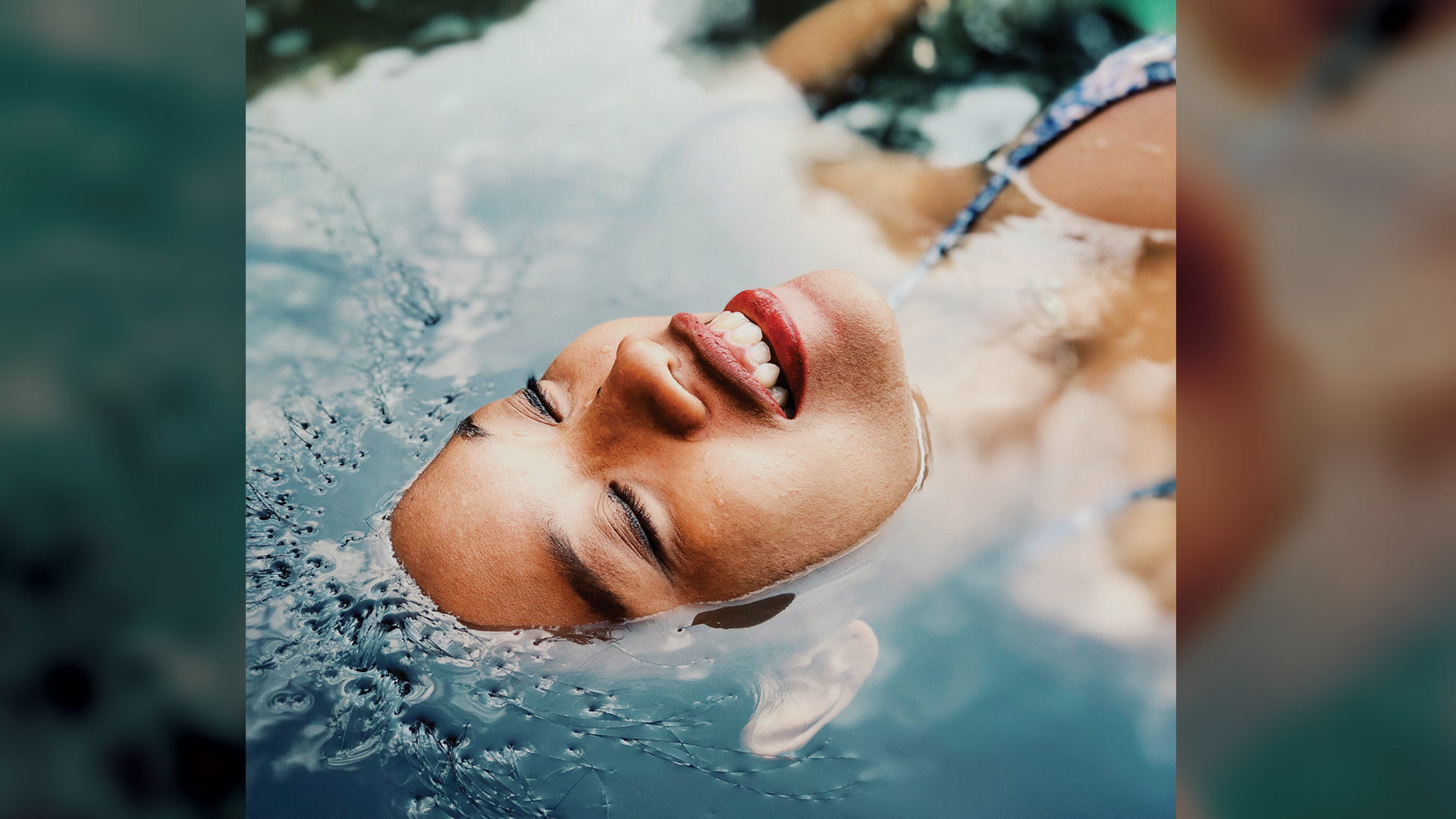Growing up, water was home. My body was free when I was submerged in it. Whenever I jumped, dove, danced, or maneuvered in exaggerated ways, I did not get hurt nor faced the physical consequences as if I were on land. And when my body had much energy and emotion that needed to be released, the water slowed me down—containing and welcoming my body. The water held me.
When I was nine-years-old, my cousin and I went swimming on a hot summer day in Manila, Philippines. Upon returning from an invigorating swim, I noticed the sun had touched my skin and left a darker tone on my complexion. I did not give this change of color that much attention; in fact, I carried a sense of pride bearing the sun marks on my shoulders. I never thought of it much until the people around me did. Friends and family members would say, “Hala, Gabes! Ang itim mo na!” (“Oh no, Gabes! Your skin got so much darker!”), “Gabes, did you even put sunscreen lotion on? Look what happened now.” A friend of my cousin’s even hugged me apologetically and with deep sympathy, as if getting darker skin was the worst thing in the world. But what she did not know was that the loss was not in the change of complexion. This was the time when my younger self began to rethink her relationship with swimming—that perhaps she should refrain from the water for now.
In the Philippines, there is an implicit and pervasive understanding of what it means to be beautiful, and this underlying notion has carried on for centuries. The ideal image of beauty is to appear more white: to have caucasian features and lighter skin. I’d hear stories about parents who used wooden laundry clips on their kids’ noses to reshape the flat and broad cartilage into a bridged form. In some instances, Filipinos with darker skin tone and a flat nose would get bullied and teased by others for their natural looks.
In my work at The Seattle School, I have researched and processed how this stigma stems from my country’s history of oppression and that there are numerous types of oppressive forces and scripts around body image that have already been shaping social and cultural contexts which, frankly, are forces and scripts that seem more familiar to us than they are oppressive.
The dominant narratives in society and media, especially the realms of fitness, clothing, advertising, and film, have taught us to hate our bodies. They capitalize on our self-esteem, our body hatred, and our fear of not being pursued, accepted, and loved for their own economic and societal advantage. But as much as there is urgency in exposing and challenging these self-loathing ideologies and systems that magnify the so-called standard for beauty, we must be awakened by our own unconscious tendencies that replicate and reinforce such scripts and ideas which continue to dismiss and think less of ourselves and others based on how we look or not look. We see these ideas in the minor and seemingly ‘normal’ details of how we compliment our friends who lost weight, exchange dieting tips that subconsciously inflict fatphobia, give our lingering attention to people who resemble television models, stereotype marginalized bodies, and in my case, praise the white body and reject the natural parts of being a Filipina.
I know that our world is changing and is reckoning with these issues and stories, but have we examined our own part in holding an inhospitable and discriminatory system together? Have we paid attention to our vernacular and our assumptions of what our own standards of beauty look like? When we think of ‘beauty,’ is it more automatic for us to think about someone or something else other than us? Have I, as part of the marginalized group, made the efforts to reclaim who I am in my body as an act of defiance against the social stigma? Have I returned to the sun and the water – the natural friends to my brown, islander body? Have I befriended them again, as it chooses to nourish and replenish me in my full self? Will I let it hold me again?
Resources to Go Deeper:
Fearing the Black Body, Sabrina Strings


